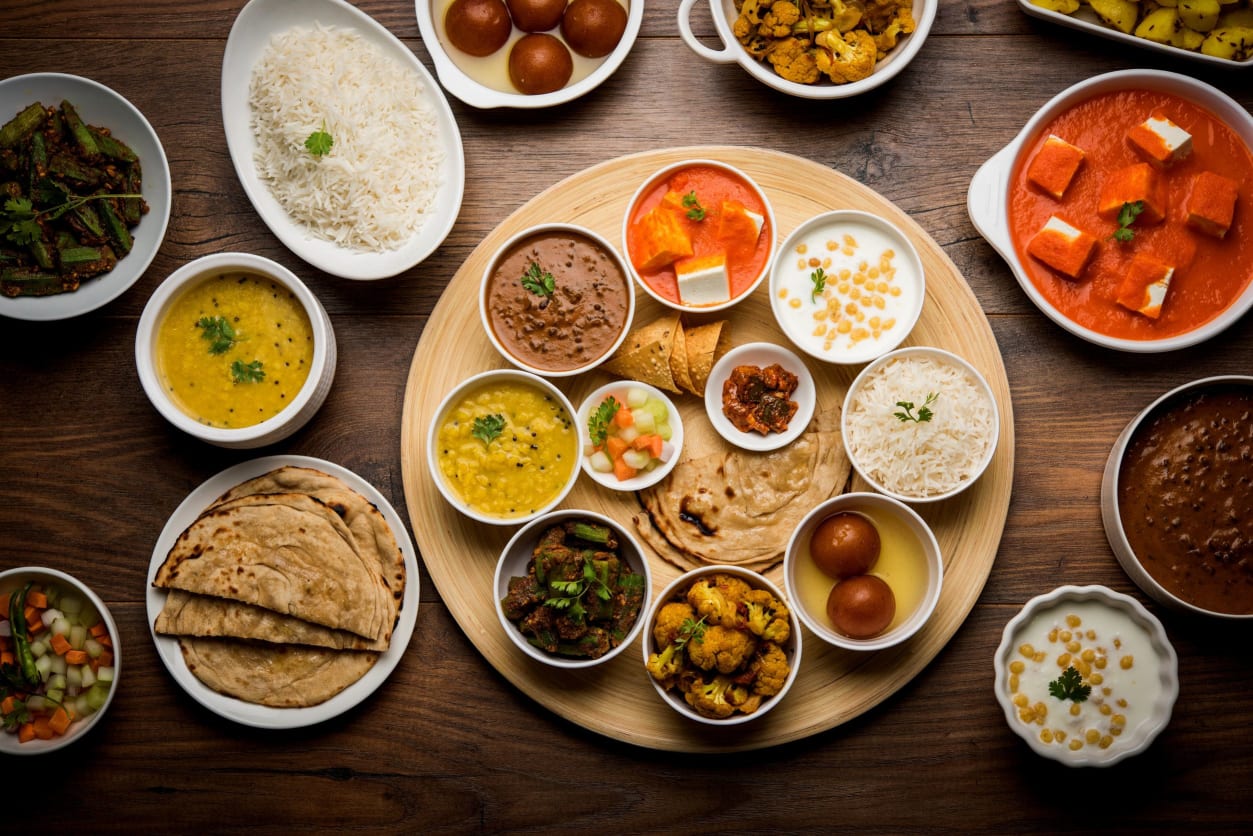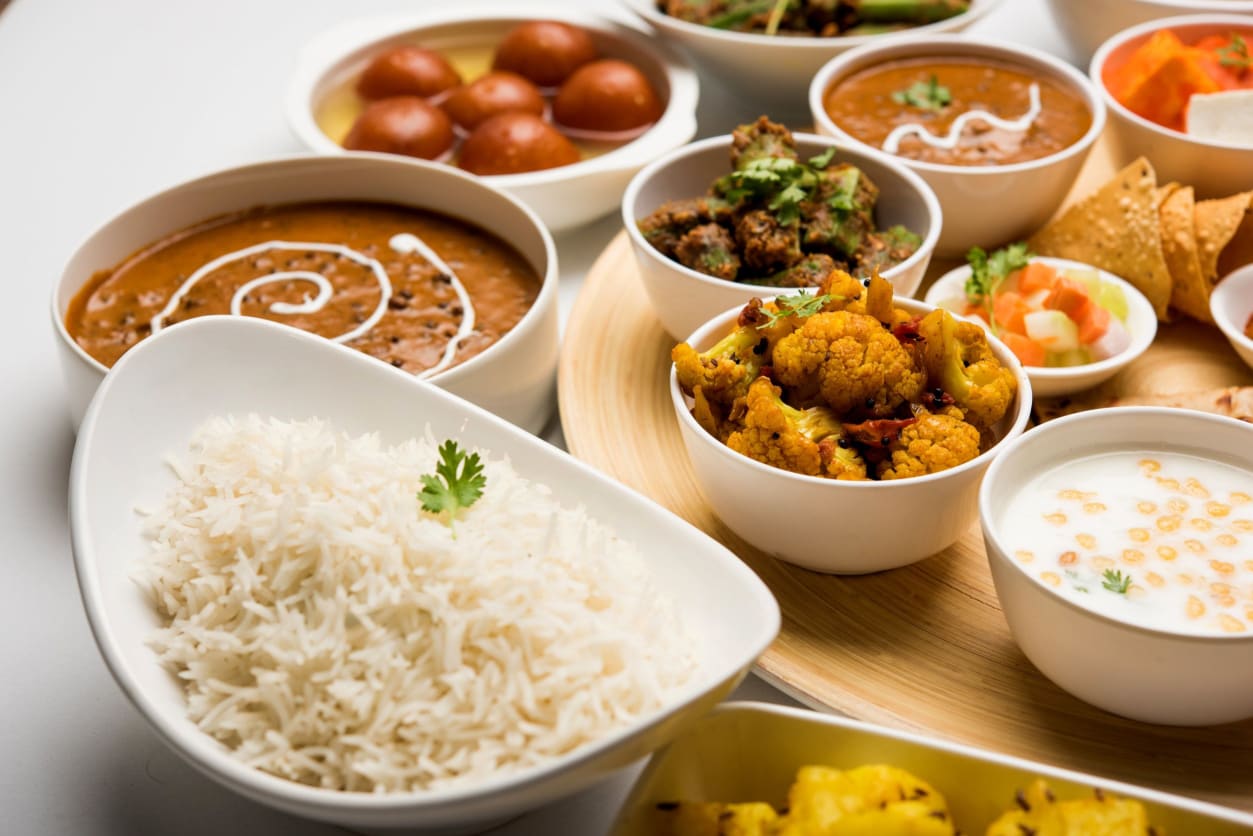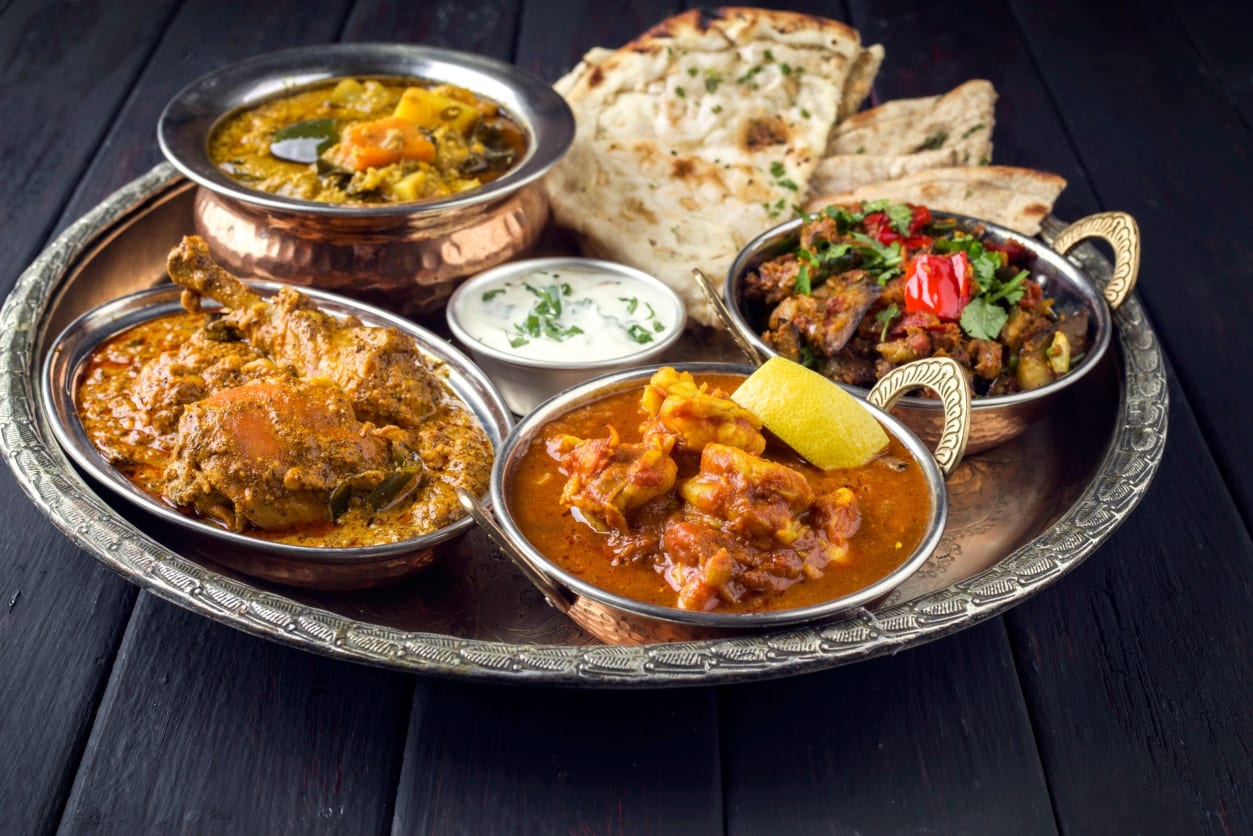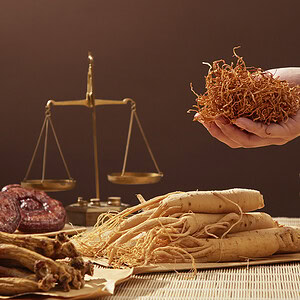Thali is an Indian tradition that incorporates a selection of taste sensations in one meal — with Maunika Gowardhan.
Thali means ‘large plate’ and, as a meal, comprises several different dishes, from spicy to sweet.
We talk to Maunika Gowardhan — who wrote the Thali cookbook — for the World Cuisine section of our magazine.
What flavours and textures make a good thali?
“A lot of the time when we think of thalis they can come to mean lots of dishes and can be very overwhelming.
“To achieve something that’s home cooked we need to think about a thali that is well balanced. This includes a stir fried dish, flavoured daal, vegetable or meat curry, flat bread, rice and plain yoghurt.”

How do thalis differ across India?
“A Gujarati thali is a balanced meal with sweet and savoury flavours. A distinct element of a thali from this community is the variety of vegetables cooked in different ways – from stir fried aubergines, to a soupy butterbean curry and a sweetcorn and coconut side dish. All use a variety of spices and bring different flavours to one meal.
“Daal is a regular feature and has a delicious sweet and sour flavour to it, alongside a fresh salad, wholemeal bread, rice and papad [poppadom].
“Punjabi thalis come together based on the influences from the northern region of India. The flavours are robust and unapologetic.
“Dairy is such a vital part of the cuisine and is used in different forms via cooking or within the thali. Curries cooked in ghee [clarified butter], the addition of paneer [cheese] in tikkas and curries, and yoghurt are all part of this thali.
Thalis are a complete meal experience and brimming with vegetables, lentils, wholemeal breads and aromatic curries that bring warmth and flavour to our meals
“Tikkas cooked in a tandoor [clay oven] are such a vital cooking technique from north India, alongside meat curries that feature stir fried chicken with whole spices, or slow cooked lamb curries.
“Breads are wheat, maize or millet based, which are grains that are commonly grown in the north of India.
“The southern coast of India is made up of states including Andhra Pradesh, Karnataka, Kerala, Tamil Nadu and Telangana to name a few.
“Food unifies all these states in many ways, although there are so many distinct recipes, cooking techniques and spices that also set them apart.
“For example, cooking with fennel and black pepper in Tamil cooking dates back centuries as both are locally grown.
“When we think of Andhra Pradesh, the misconception of the local food being searingly hot couldn’t be [further] from the truth.
“My favourites are the Andhra lamb chops curry with tamarind and ginger, from the lamb chapter in Thali, and also an Andhra thali which gives an insight into how the food from this region is diverse, full of flavour and simple to cook.”

Growing up, what was your favourite street food and why?
“I’m a huge fan of Indian street food and perhaps that stems from my upbringing in Mumbai. It’s tricky to choose one as there were so many that I loved and ate.
“For me Frankie rolls [flat bread (paratha) stuffed with marinated lamb with a mint and coriander chutney] were a favourite because we’d have it as a snack while travelling on the bus with Mum across the city.
“Also in my teens I devoured a good vada pav [fried potato patty with chutney, served in a bun] which was just outside our college.
“A tiny stall serving piping hot vada pav, masala chai [milky tea made with spices such as cardamom] with not much more than a little bench to sit on while watching the Mumbai monsoons.
“I honestly don’t think it could get much better!”
What ingredients do you always have at home?
“Spices are always in stock at home but I think I also like the idea of stocking up the larder with my convenience goods including tinned chickpeas, kidney beans and frozen veg. Staples that assist in making a quick midweek meal!”

How has Mumbai’s history influenced its cuisine?
“The city is a melting pot of Indian cuisine and with many people frequently making Mumbai their home, the one way for it to truly feel like home is the food cooked by communities within the city.
“The diversity evolves and is an example of the vibrant regional Indian food that you can sample within just one city.”
How important is nutrition when serving a thali?
“A lot of what gets served over a thali includes pulses, grains, dairy and even fresh fruit — ingredients that are high in protein, carbohydrates and rich in vitamins…
“Thalis are a complete meal experience and brimming with vegetables, lentils, wholemeal breads and aromatic curries that bring warmth and flavour to our meals.”
Enjoyed this article?
Check out the top seven reasons we love chickpeas
For articles and recipes subscribe to Optimum Nutrition
Discover our courses in nutrition






